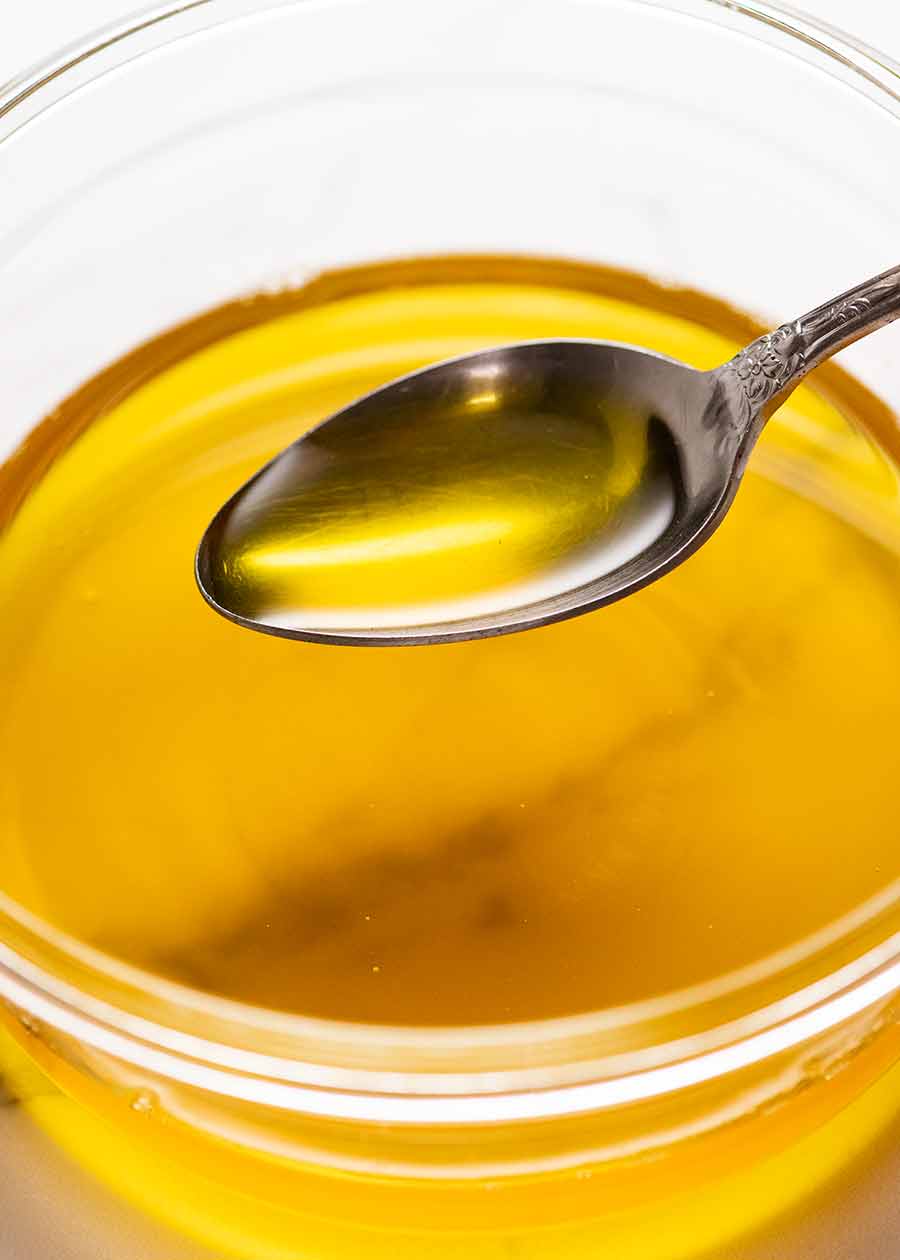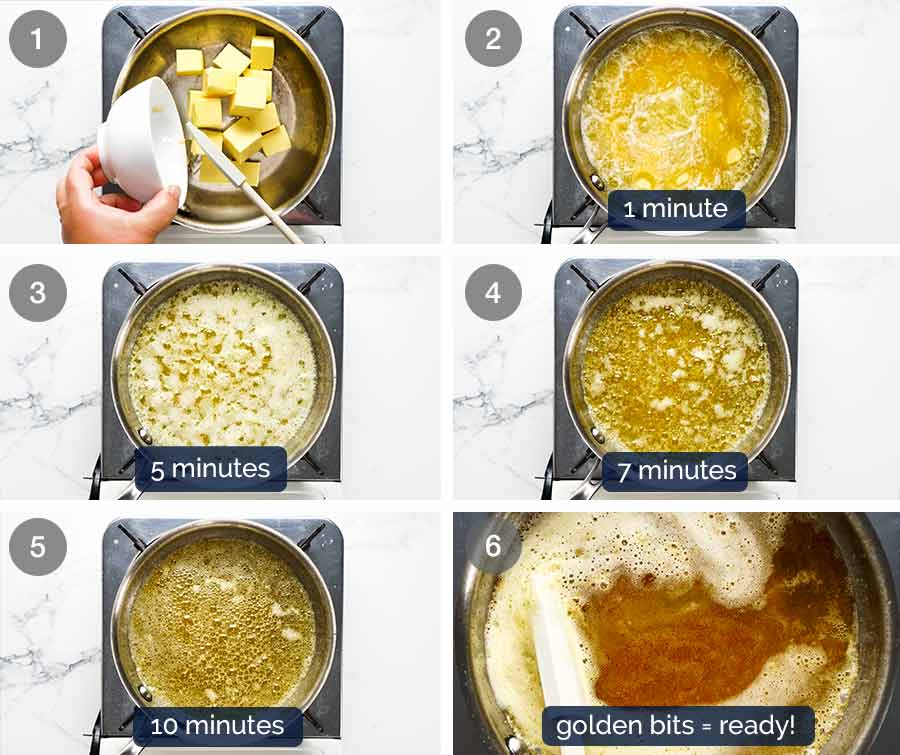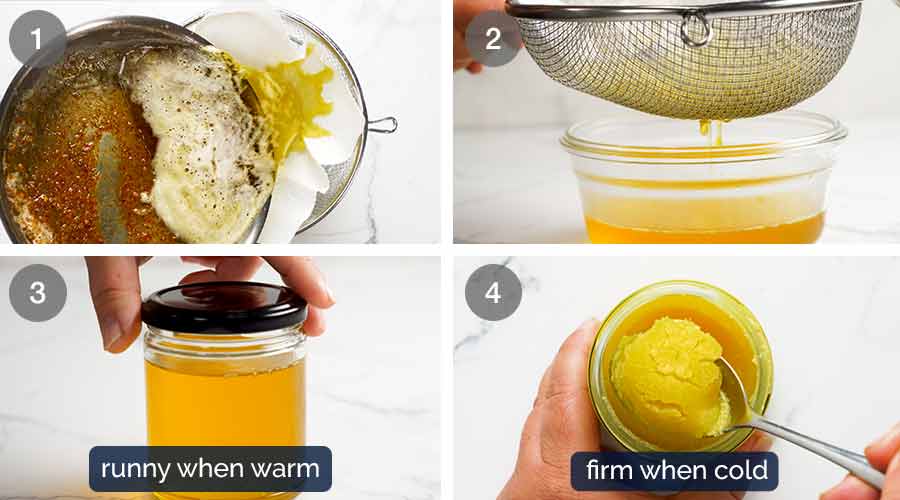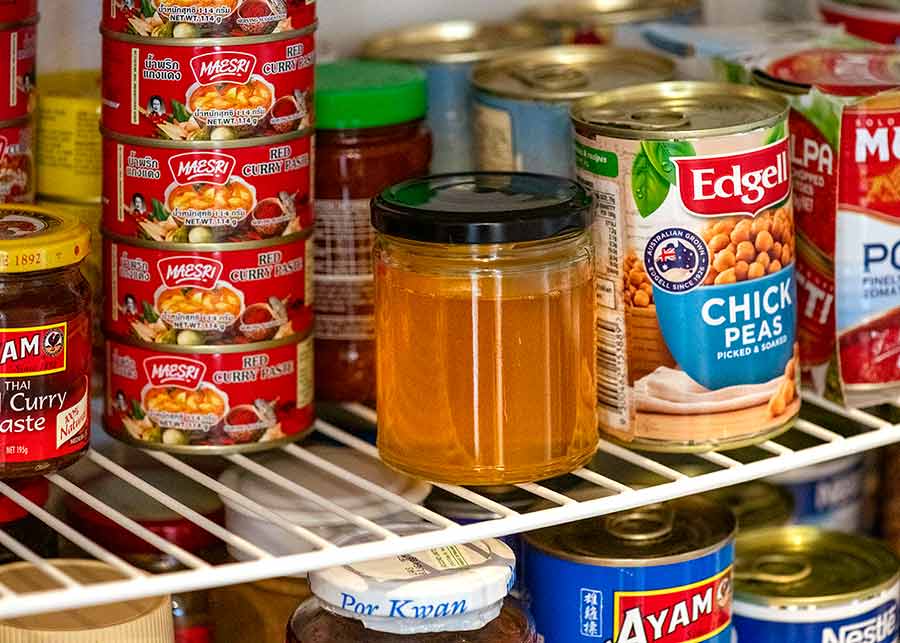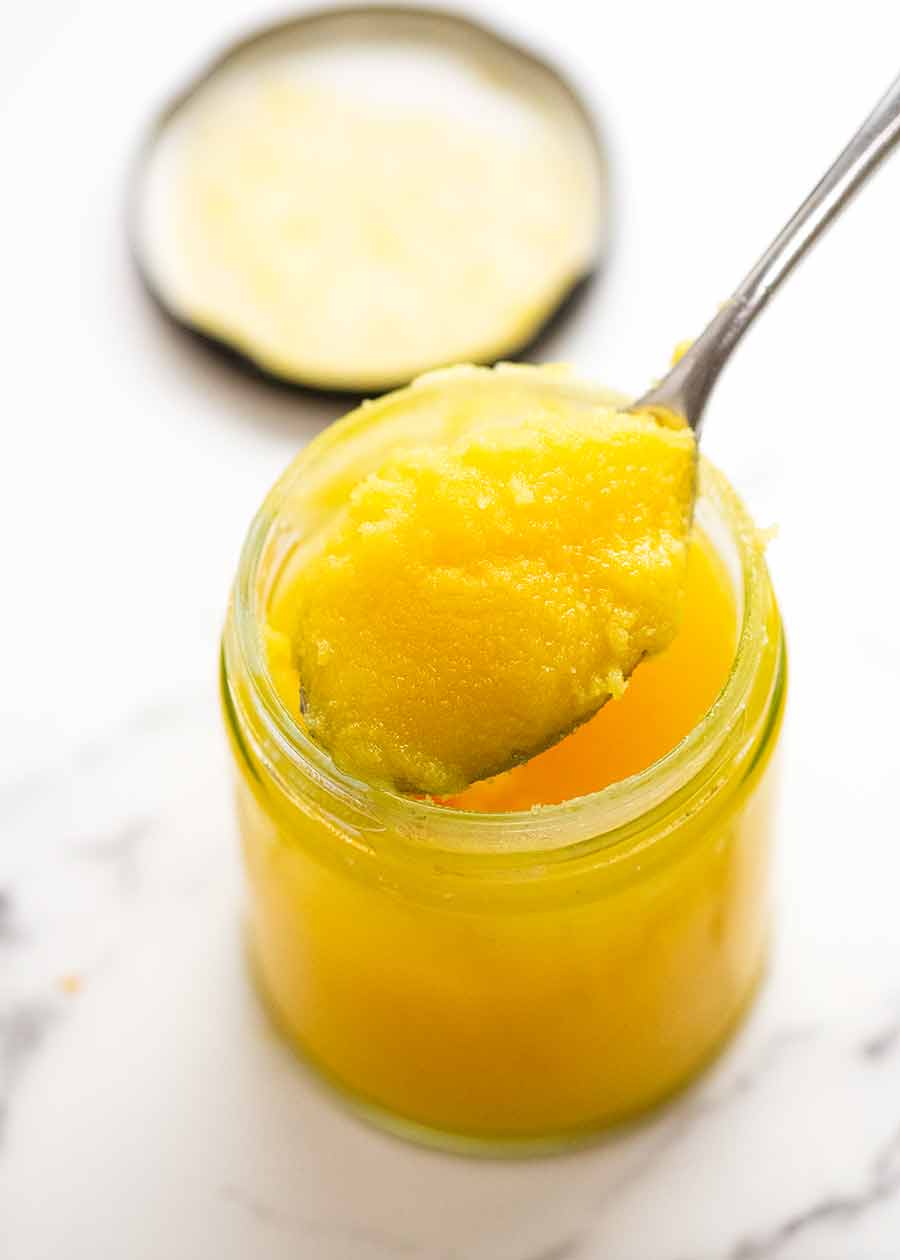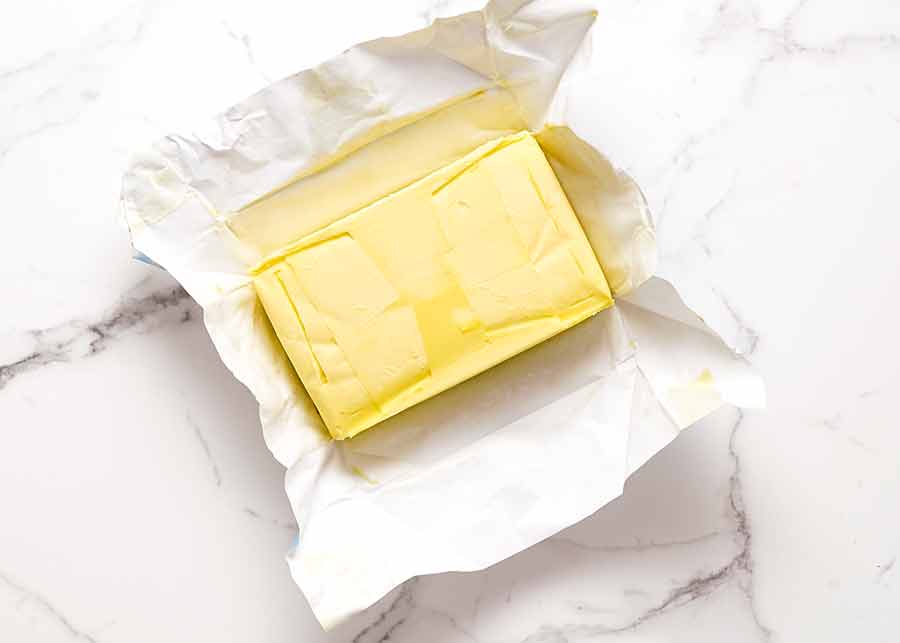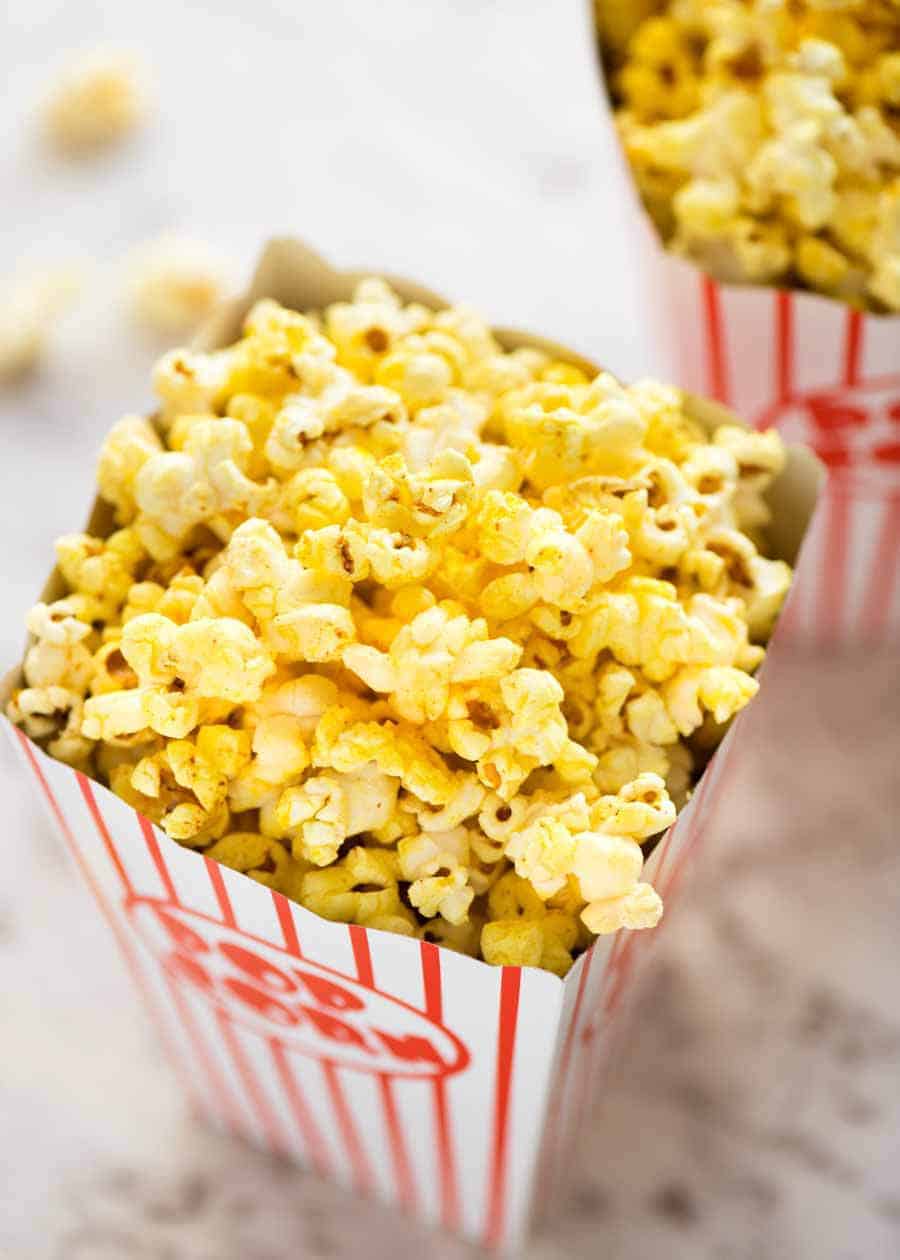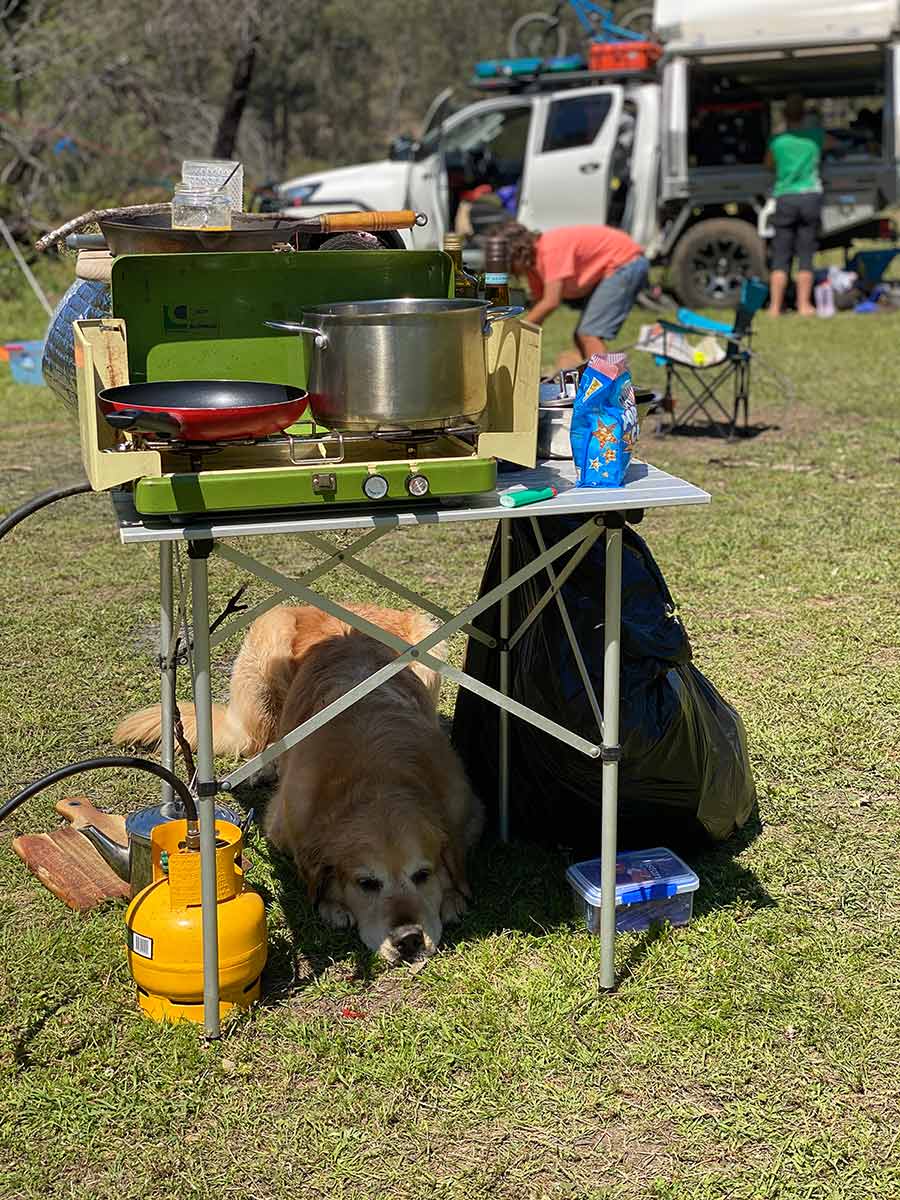It’s the fat used in many traditional Indian curries for intense buttery richness, to make pan fried things like Potato Rosti super crispy, and a restaurant secret for extra lush Hollandaise Sauce (in 90 seconds!).
I’ve used clarified butter and ghee in a handful of recipes and in each of those I keep repeating the same directions for how to make it at home if you can’t find it, plus it’s about half the price to make at home.
Clarified Butter is normal butter minus the dairy component and water ie just butter fat; Ghee is a type of Clarified Butter, best known as used in Indian cooking. Arguably the purest form because the method to make it ensures 100% of the dairy is removed, whereas some basic methods for clarified butter are not as thorough; They have a more intense butter flavour and in the case of Ghee, a slightly nutty flavour imparted by the browned milk solids; Is a gorgeous golden yellow colour; Is completely clear and pure, not clouded with milky bits and foam like normal melted butter; Makes things much more crisp than butter – such as the Potato Rosti pictured below; and Has a high smoke point of 230°C/450°F, compared to butter which has a smoke point of only 175°C/350°F. This is in fact higher than some vegetable oils, meaning you can use clarified butter/ghee just as you would a normal cooking fat, frying and sauteeing things at a high temperature without setting off the smoke alarm.
So I thought it was about time I put up a separate recipe for it – because it’s so easy!
How to make Ghee / How to make Clarified Butter
If you can melt butter on the stove, you can make ghee! Essentially, you just leave butter on a medium low stove for 10 minutes until you see golden bits on the base of the pan which are the milk solids – and this means it’s done. The water has evaporated and the dairy has solidified which will be strained out. Here’s how it changes during the simmering time:
Then simply line a mesh colander with a paper towel and strain. Then marvel at the incredible liquid gold – and the smell! It’s insane – so buttery and nutty!
How to store ghee / clarified butter
Ghee and clarified butter can be kept in the pantry because the dairy has been removed and the butter is now 100% fat, so it won’t spoil. It will keep for 3 months in the pantry – or even a year in the fridge! Important note: other basic methods of making clarified butter – such as just skimming the foam off – are not as thorough in removing all the dairy. So you should not store that in the pantry, it must be kept in the fridge. And I personally would not keep it any longer than the shelf life of the butter you used.
Ghee is liquid when it’s warm. In the pantry, it will firm up but still be quite soft – sort of like peanut butter consistency – as depicted below. If you refrigerate it, it becomes very firm, like butter, but it looks sort of grainy (melts completely smooth).
What butter to use
I use unsalted butter. Ghee and clarified butter purchased at the store is unsalted. You can use salted if you prefer, but unsalted is handier because it’s the standard in recipes so you don’t have to worry about oversalting things because you have salted ghee.
What is clarified butter? What is ghee? And what’s the difference?
Clarified butter and ghee are the almost same thing. Both are simply normal butter with the water and milk solids removed, leaving behind pure butter fat. Pure butter fat has a more intense butter flavour and a higher smoke point, meaning it is suitable for using just like regular cooking oil. Put another way, butter is made up of about 82% fat, and the rest is dairy (milk solids) and water. The dairy is what leaves black spots on your food when you sear over high heat – because it burns. The water is what stops things going ultra crispy when you pan fry in butter, and it dilutes the butter flavour. So with clarified butter, the water is removed and the dairy component is strained out, leaving you with pure butter fat.
The difference between ghee and clarified butter
Clarified butter is the general term for butter that has had water and milk solids removed, as explained above. However there are different methods for achieving this. One of the quickest and most common methods is to melt the butter, skim off the foam (which are the milk solids that initially float to the surface) and pour off the butter fat for use, leaving behind any remaining water. Ghee however takes a specific approach to clarifying butter. Instead of skimming, you continue to heat the butter until all the water boils off, the milk solids go brown and sink to the bottom, and finally are strained out. As you can see this is the exact method I’ve provided above. So what you get with mine is true ghee! Think of it as a specific kind of clarified butter. I find it’s not only simpler, but has a superior flavour too AND you can be confident that every bit of dairy has been removed so it is safe to keep for months – years, if stored in the fridge!!!
What to do with ghee / clarified butter
Both ghee and clarified butter are used in cooking, as opposed to spread on toast or bread. You can use it in place of butter in recipes because it has a higher smoke point than oil – it will make things crisper and you won’t get those burnt black spots you get from pan frying in butter. Here are a few examples:
As the fat for almost every Indian dish, especially curries – traditional use of ghee; To make the crispiest, best tasting Potato Rosti you’ve ever had; In place of oil or butter in any recipe for pan frying, roasting, sauces. Try Garlic Prawns with butter instead of oil, use it to pan-fry fish, for crispy roasted potatoes, buttery roast carrots, or this butter smeared Herb and Garlic Roast Chicken, Standing Rib Roast or Turkey Breast (use the ghee softened, not melted); In Hollandaise Sauce for Eggs Benedict – for a richer flavour and smoother sauce; Elegant, classic French Sauce for pan fried fish – see Lemon Butter Sauce for Fish; Drizzle steamed, braised or roasted vegetables to make it even tastier; Toss through this Movie Popcorn or Lightly Sweet ‘n Salty Popcorn – it stays CRISP for days, unlike when using normal butter! Drizzle over soup; To make rice dishes, such as Mushroom Risotto or Buttery Seasoned Rice; To make the most amazing steak ever.
Note: Use with caution in baking recipes (such as cakes and cookies). Baking is a science – so you don’t want to muck around with batters. Lastly, it’s worth knowing that ghee is a secret ingredient used by Chefs in fine dining restaurants to add an extra touch of buttery flavour into dishes. Whether it’s brushing filo pastry for baklava or stirring through Creamy Mashed Potato or to make the most amazing Mashed Cauliflower of your life, it’s just one of the little tricks used by professionals to make food extra special. And now YOU can do it too! – Nagi x
Watch how to make it
Life of Dozer
Never far from the food station, whether cooking at home or out camping in the bush!
